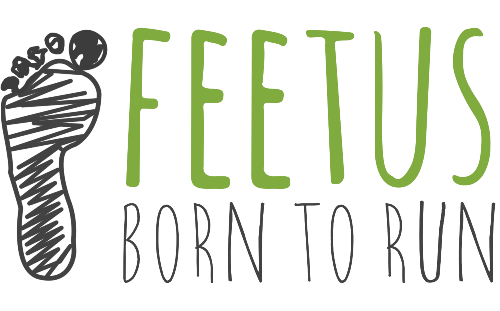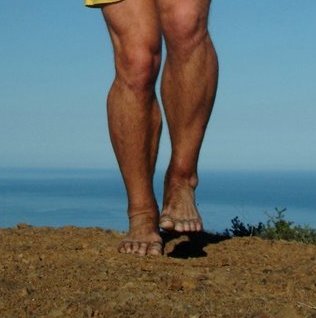Barefoot running has seen a huge surge in interest since the 2009 release of Christopher McDougall’s bestseller Born to Run.
As appetite grows for shoes that replicate the ‘feel’ of running with bare feet, have you taken the time to understand exactly why running barefoot is good for you?
Why Should I Adopt A Barefoot Running Style?
Runners in shoes typically land on their heels, using the cushioning built in to the heel of the shoe. When your foot lands in this manner, it sends a jolt of force though your ankles, knees, hips and spine. This impact is called a transient force spike.
Running barefoot promotes a different technique. Runners who run barefoot tend to land on their forefoot or midfoot. This effectively keeps the landing point closer to your centre of gravity (as opposed to in front of the body, like shoe-clad runners).
When you run, your muscles, ligaments, and tendons in and around your feet will provide you with a natural spring-like mechanism, reducing the impact (transient force) through your body.

It’s All About Technique
Running with bare feet (or with barefoot shoes) will not guarantee injury-free running. Instead, you have to ensure you learn correct technique, focusing on a forefoot/midfoot strike, a shorter gait (shorter, faster foot steps), and only increase your mileage incrementally.
If you tried to run barefoot the same way you do when you’re in running shoes, it would really hurt. You should lose the shoes to understand how to run in a way that feels light and comfortable. Once you have mastered this, start to increase your mileage by around 10% and you may find running more fun and less likely to cause injuries.
There is no science that proves running shoes are helpful. In fact, people lived for millions of years without shoes. Until the 1970’s, runners enjoyed running without padding, orthotics, pronation, arch support, and motion control shoes.
Stephen Sashen from Xero Shoes (rather splendidly) puts it this way:
The three parts of our body that have the most nerve endings are our hands, our mouths and our feet. There’s only one of those that we regularly cover and make numb to the world… does that seem right?
Put a limb in a cast and it comes out of the cast a month later atrophied and weaker. When bind your feet in shoes that don’t let your foot flex or feel the earth, isn’t that similar to putting it in a cast (or as barefoot runners like to say, a “foot coffin”)?

Barefoot Running Shoes
Of course, in today’s world we can scarcely discard our shoes in favour of bare feet. That’s where barefoot shoes come in. They give you the sensation of running barefoot, whilst providing protection from anything nasty you may step on. VIVOBAREFOOT shoes have puncture-resistant soles. Xero Shoes have FeelTrue rubber soles that are guaranteed for 5,000 miles. And of course, Vibram FiveFingers and Merrell running shoes are equipped with Vibram TC-1 rubber – Very flexible, yet extremely durable!
Want to learn more about correct running technique? …Head over to the VIVOBAREFOOT Training Clinic.
What are your favourite barefoot running shoes? Let us know by making a comment…





